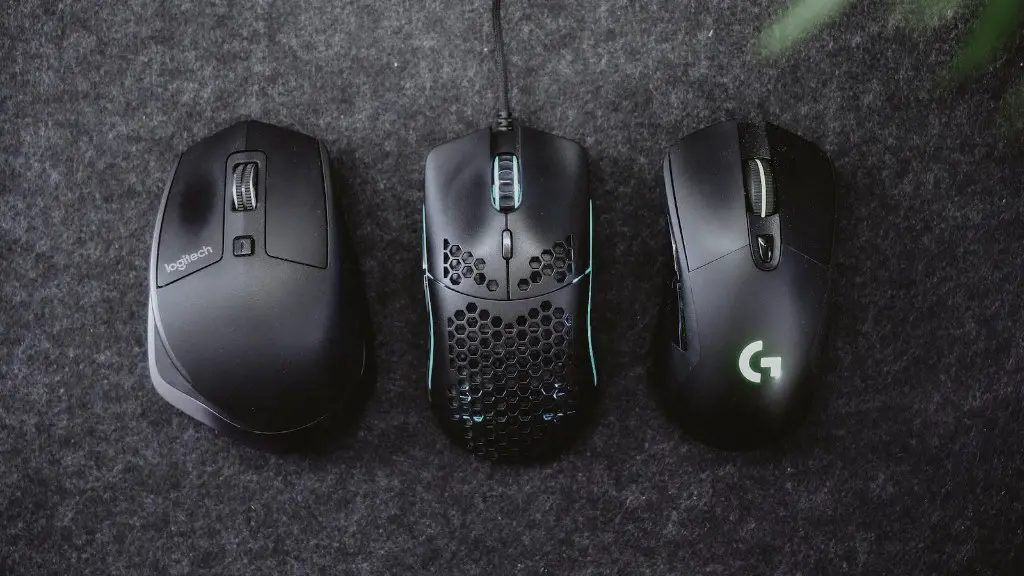A gaming monitor is a computer monitor that is specifically designed to provide the best possible experience for playing video games. It is usually larger and higher resolution than a regular monitor and often has additional features such as a faster response time and adjustable settings. For most gamers, a gaming monitor is a must-have piece of equipment, as it can make a significant difference in their gaming experience.
A regular monitor, on the other hand, is a general purpose computer monitor. It is typically smaller and lower resolution than a gaming monitor. It also does not have any extra features or settings for customizing the display. It is most suitable for everyday purposes such as browsing the web, streaming video, and basic office applications.
The main difference between a gaming monitor and a regular monitor is the refresh rate. Gaming monitors typically have a higher refresh rate, meaning the image on the screen updates more frequently. This results in smoother and more responsive gameplay. Regular monitors typically have a refresh rate of 60 Hz, whereas gaming monitors usually offer higher refresh rates such as 144 Hz or even higher.
Another difference between gaming monitors and regular monitors is the response time. Response time is how quickly the monitor can register a change in the image on screen. Gaming monitors typically have faster response times, which means that they can display the changes on screen much more quickly. This is important for fast-paced games such as first-person shooters, where quick reaction times are essential.
Lastly, gaming monitors usually have adjustable settings that allow the user to customize the appearance of the image on the screen. This includes features such as brightness, contrast, and color settings. Regular monitors do not typically have these features, which means the user is limited to the default settings.
Features Of A Gaming Monitor
One of the most important features of a gaming monitor is the refresh rate. As mentioned above, gaming monitors typically have higher refresh rates than regular monitors, providing smoother and more responsive gameplay. Additionally, gaming monitors also offer adjustable settings such as brightness and contrast, allowing users to customize the image on the screen to their personal preferences.
Many gaming monitors also come with features such as AMD FreeSync or NVIDIA G-Sync, which allow the monitor to adjust its refresh rate dynamically to better match the frame rate of the game. This helps reduce screen tearing, which can be distracting and disruptive during gameplay. Some gaming monitors even feature support for high-dynamic range (HDR) technology, allowing for an expanded color range and increased contrast.
Finally, many gaming monitors also come with extra features such as special gaming modes that adjust the image settings for specific genres of games. For example, a racing game may have a special mode that boosts the visibility of the track, while an FPS game might have a mode that boosts the colors to make objects easier to spot.
Advantages of a Gaming Monitor
The main advantage of a gaming monitor is that it provides a better playing experience. The higher refresh rate and adjustable settings offer smoother and more responsive gameplay, while the additional features such as FreeSync and G-Sync can help reduce screen tearing. Additionally, the extra gaming modes can be beneficial for certain genres of games.
A gaming monitor can also provide a more immersive experience. The higher resolution and HDR technology offer a wider viewing angle and increased levels of detail, allowing the user to experience the game in a more realistic fashion.
Finally, gaming monitors are also much more durable than regular monitors. Since they are built for gaming, they are able to withstand more wear and tear, making them more reliable for long-term use.
Disadvantages of a Gaming Monitor
The main disadvantage of a gaming monitor is the cost. Gaming monitors are typically much more expensive than regular monitors, and the additional features such as FreeSync and G-Sync can add to the cost. Additionally, the extra gaming modes are often of limited use, and may not be necessary for most gamers.
Gaming monitors are also usually larger and heavier than regular monitors. This means that they can take up more space on the desk, and may require additional furniture to accommodate them. Additionally, the extra weight makes them more difficult to move.
Finally, gaming monitors typically require more power than regular monitors. This means that they can be more expensive to run, and may require additional cooling components such as fans or a liquid cooling system.
Conclusion
A gaming monitor is a computer monitor that is specifically designed for gaming. It typically has a higher refresh rate, faster response time, and adjustable settings for customizing the image on the screen. However, gaming monitors are much more costly than regular monitors, and often require extra power and cooling components. Still, for most gamers, the improved gaming experience that a gaming monitor provides is worth the extra cost.


